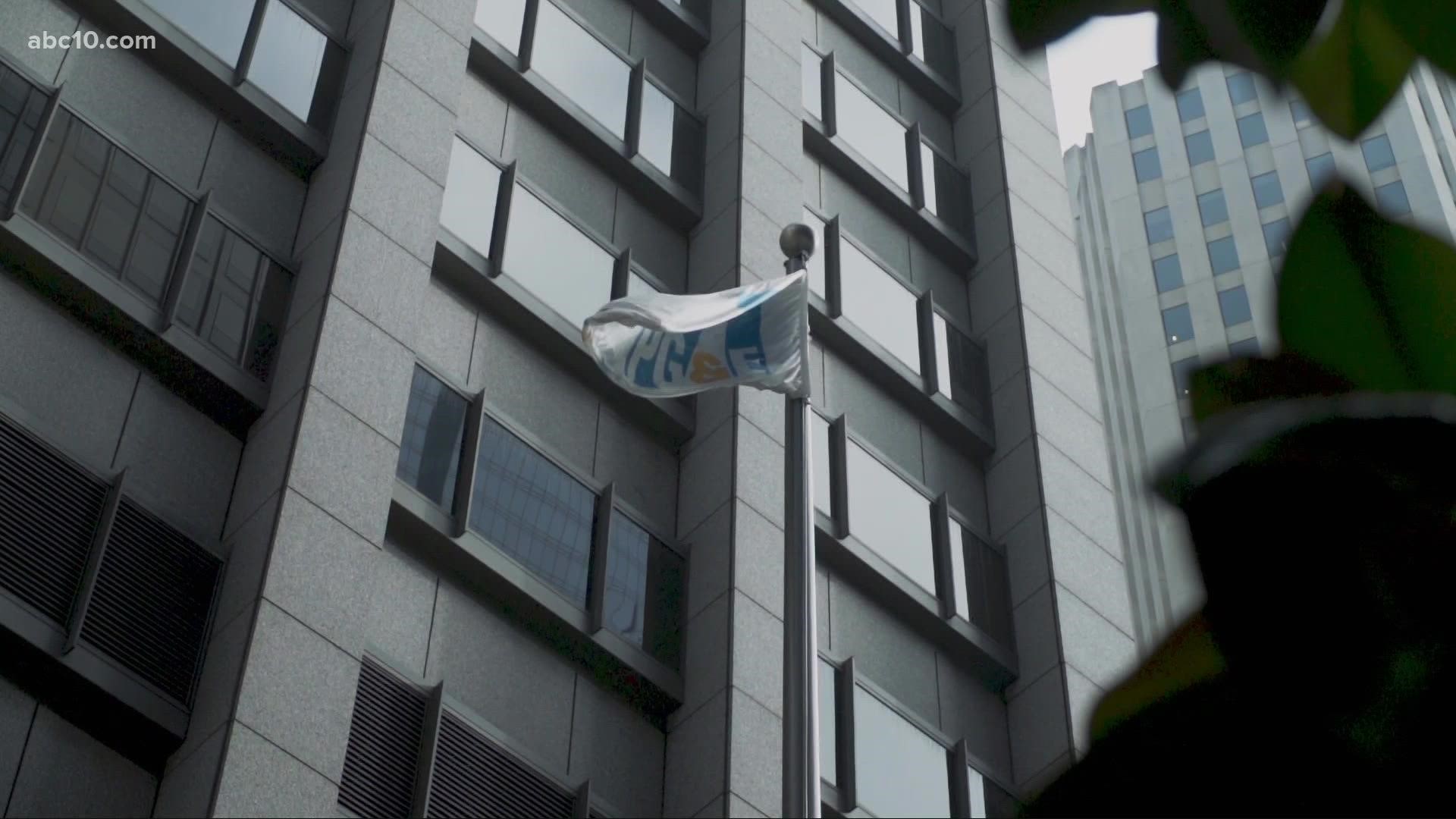SACRAMENTO, Calif — PG&E, the corporation, is already a criminal.
In fact, it's a recidivist with 91 felonies and hundreds of misdemeanors on its record.
Most of the felonies come from PG&E' sparking of the deadliest and most destructive wildfire in state history: the 2018 Camp Fire.
The company's leaders promised change, but PG&E faces dozens of new criminal charges, including new manslaughter counts, accused of sparking more fires throughout Northern California. What becomes of those charges could impact customers' power bills.
Who will pay for the cost of PG&E's wildfires? Will it be PG&E shareholders? Or will it be customers of PG&E, who already pay some of the highest power rates in the nation and are currently facing proposed increases?
It could be decided by a deal still in the making.
HEARINGS HALTED FOR DEALMAKING
In Sonoma County, witnesses started taking the stand last month in a preliminary hearing for 33 criminal charges against PG&E, including reckless arson, related to the 2019 Kincade Fire.
After two days of court, those hearings ground to a halt when Sonoma County prosecutors announced a “resolution” could come soon.

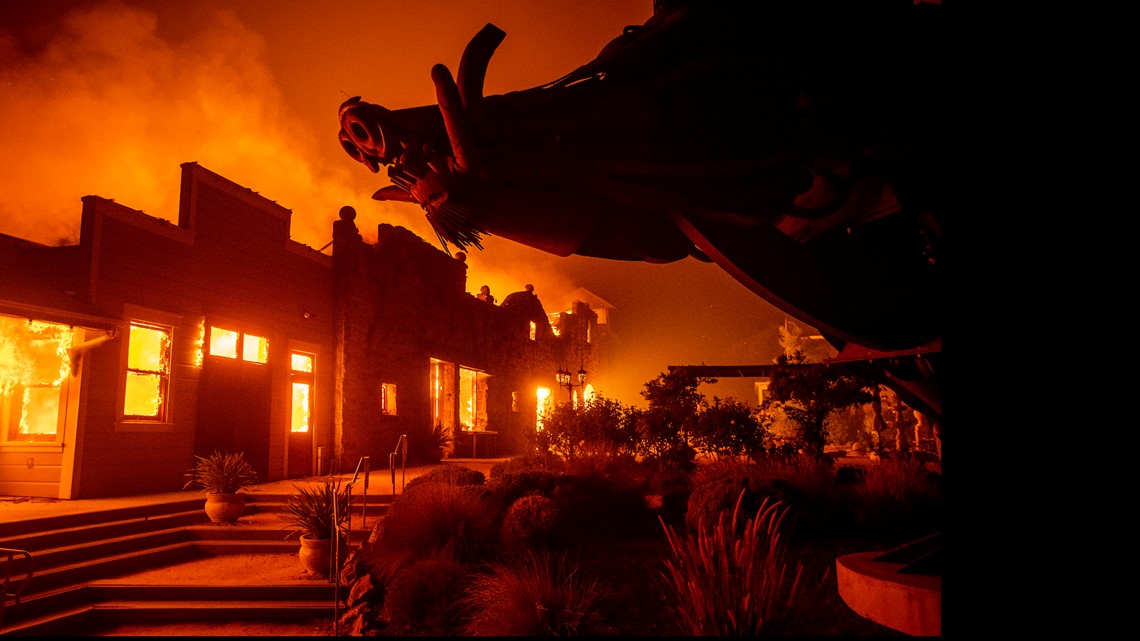
Seated in the courtroom, that news irked Will Abrams, a survivor of the 2017 Tubbs Fire in Sonoma County.
“If this was an individual who had the recidivism and criminal behavior of PG&E, they would never be contemplating a settlement,” Abrams said.
Sonoma County prosecutors declined to be interviewed about the deal under negotiation. It’s unclear whether PG&E would plead guilty to any crimes at all.
“It's really disappointing to hear that the prosecutors are spending any time trying to come up with some kind of easy way out for PG&E,” said former prosecutor Mike Aguirre, who represents PG&E customers pro bono in multiple legal cases. “There's no sense in writing the laws if you're not going to enforce them.”
If PG&E does not admit wrongdoing in the deal, Abrams worries “the corporations and their investors [will be] let off the hook and we have to pay.”

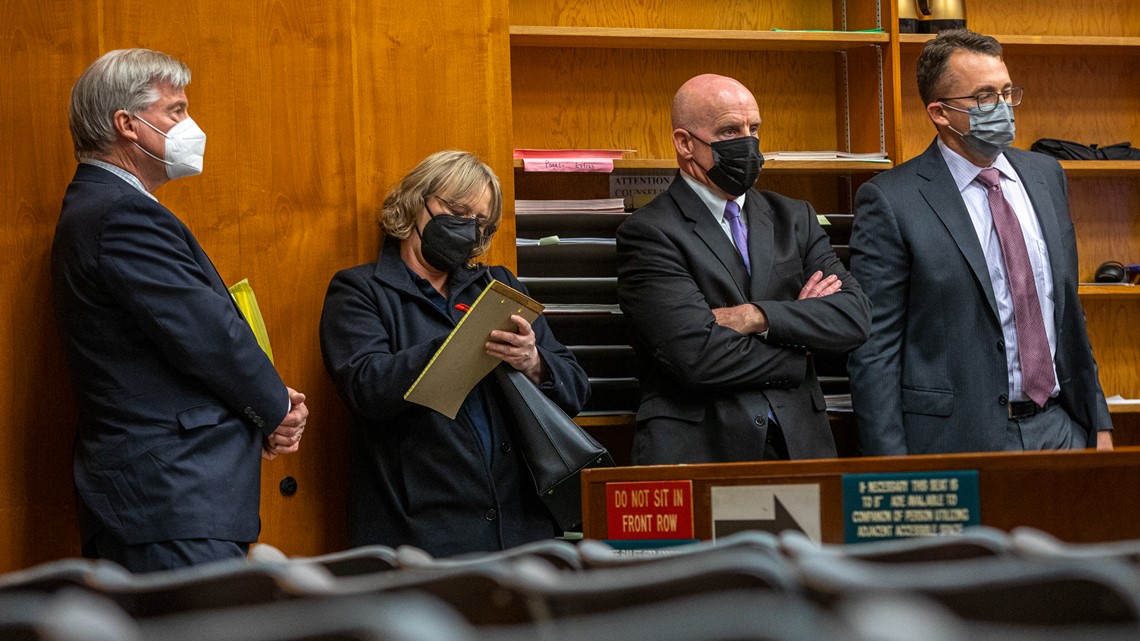
Criminal convictions can force PG&E to pay more compensation for survivors of wildfires through criminal restitution, although PG&E was able to use bankruptcy laws to limit its restitution payments for fires that burned prior to 2019.
The testimony that’s already occurred in the Kincade Fire case has raised serious questions about how PG&E maintained the power line that sparked it. A Cal Fire investigator described how a disconnected transmission line was left susceptible to extreme wind sway, leading a live wire to snap and make contact with the side of a metal tower.
The sparking of the flames bore notable similarities to the origin of the 2018 Camp Fire that destroyed the town of Paradise. In that case, PG&E pleaded guilty to felony reckless arson and 84 felony counts of manslaughter, the deadliest homicide by a corporation in the United States.

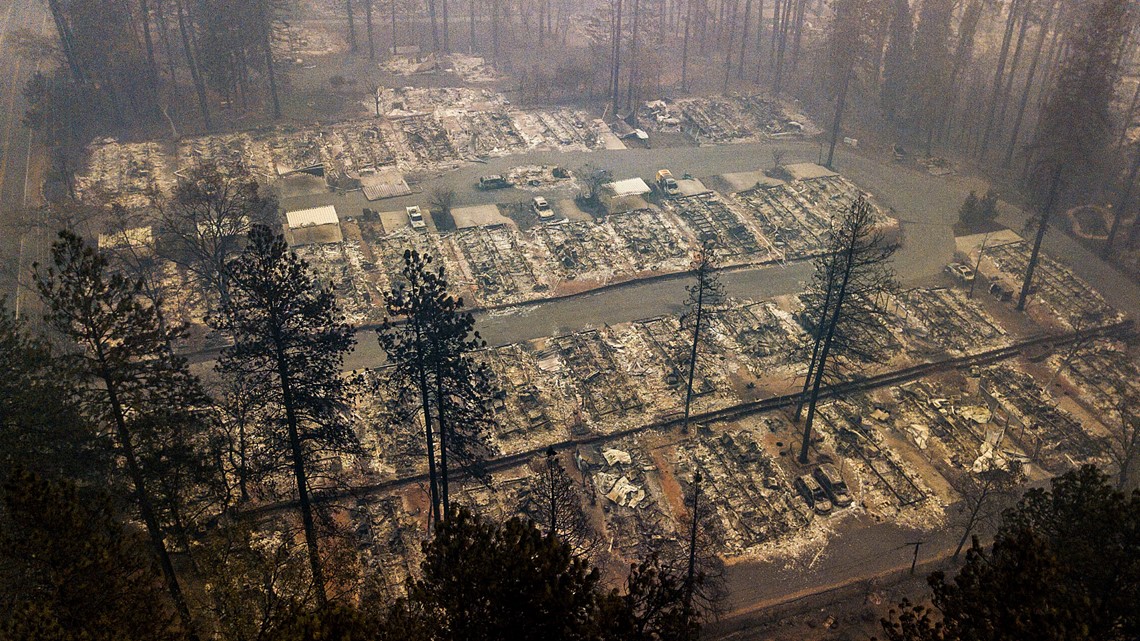
PG&E, which declined to be interviewed about the case, does admit its power line sparked the Kincade Fire. But it has denied it committed any crimes.
“What we need are convictions,” Aguirre said. “If there's ever been a time in which we need our district attorneys to be brave and protective of the public, this is it.”
"I think that they should press for trial," Abrams agreed. "Unless PG&E does something that is completely out of character, which is to admit the wrongdoing, to admit all the damages that they caused, take responsibility and make sure that they're investors pay for this and not ratepayers."
WHO HAS TO PAY
PG&E has gone to great lengths to protect its investors from the cost of wildfires.
The job is made easier by AB-1054, a law crafted and signed by Gov. Gavin Newsom in 2019. The law bestowed upon PG&E an official state safety certificate just two months before the Kincade Fire sparked. The certificate means that state regulators must presume PG&E acted “reasonably” when the Kincade Fire started.
If PG&E is deemed to have been “reasonable,” then PG&E’s shareholders would not be on the hook to pay the cost of the fire damage. This is a major reason a guilty plea from PG&E could make a difference to your power bill: A criminal conviction might help prove PG&E was was unreasonable in sparking a fire.
But it’s not guaranteed. AB-1054 does not define criminally-caused wildfires as unreasonable. Put another way: a wildfire can be a crime, but also “reasonable” for the purposes of setting power rates.
A reasonable crime.
“Criminal actions can still be deemed reasonable by the Public Utilities Commission,” Abrams said. “That paradigm is very detrimental to us in our rates.”
AB-1054 puts the burden on other parties, like nonprofit consumer advocates, to prove utilities acted unreasonably. Even if someone manages to do so, AB-1054 also capped shareholders' exposure to wildfire damage.

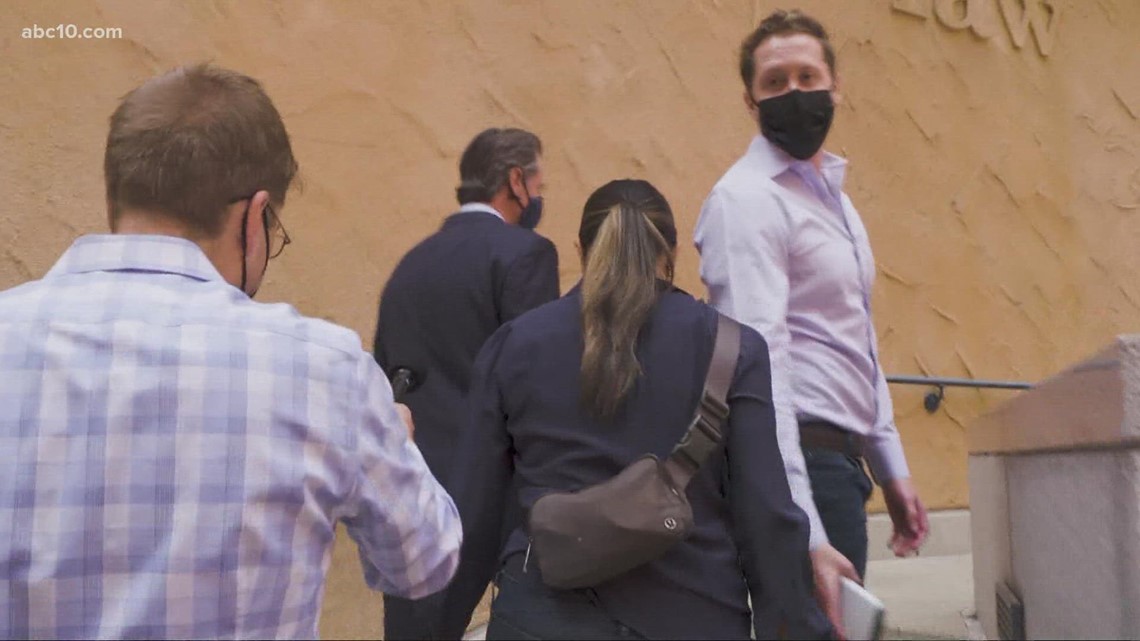
“To protect the utility, that’s the only reason why,” said Alice Stebbins, the former state official whose signature appears on the PG&E’s 2019 Safety Certificate, which she says she “did not want to sign.”
ABC10’s investigation revealed AB-1054 was written by lawyers representing Newsom’s office at taxpayer expense in PG&E's bankruptcy. Newsom’s office has declined repeated requests to discuss the legislation.
HOMICIDES, OTHER BIG FIRES ON THE LINE
The Kincade Fire isn't the only wildfire threatening to increase PG&E bills.
Arson investigators have blamed the company for sparking large, destructive wildfires every fire season since 2017. Shasta County filed criminal charges, including four felony counts of manslaughter, against PG&E for the 2020 Zogg Fire.


Fire investigators also blame PG&E for sparking last year’s Dixie Fire, which sparked near the origin point of the 2018 Camp Fire and burned almost a million acres in multiple counties.
“We need to ratchet up the penalties. Not reduce them,” said attorney Mike Aguirre, who represents PG&E customers in a lawsuit against AB-1054.
Hoping to keep the costs from ending up on Californians’ power bills, Abrams has pushed Sonoma County officials to insist that PG&E admit it was unreasonable as part of any settlement for the Kincade Fire criminal charges. That could be done as simply as writing a line into the agreement stating that “PG&E admits its conduct in igniting the fire was not reasonable" according to Aguirre, the former prosecutor.
“[It] would be somewhat helpful in keeping PG&E from recovering money from the ratepayers through the CPUC,” Aguirre said.
Aguirre points out there are other ways PG&E’s fires can cost power customers, even those who live in Southern California. To cover damage caused by the Dixie Fire, PG&E has already announced plans to take $150 million from a state wildfire fund also created by AB-1054.
Half of that $21 billion state fund came from PG&E, Southern California Edison, and San Diego Gas & Electric. The other $10.5 billion came from customers of those three companies, who are paying for it via a surcharge on their bills for 20 years.

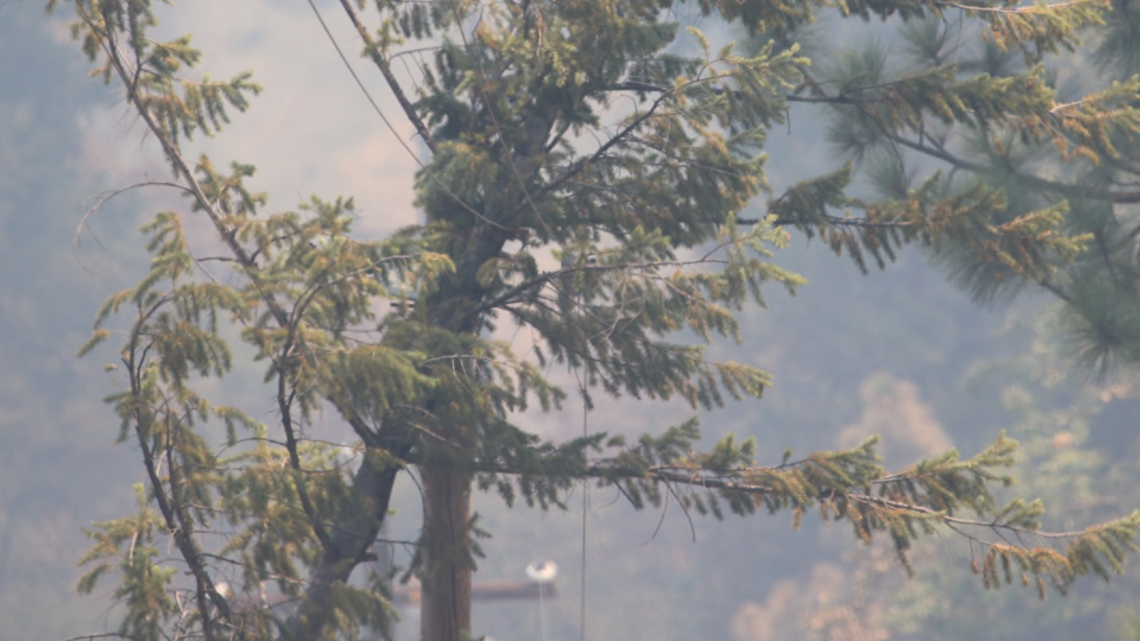
Aguirre hopes prosecutors also take those customer dollars into account in any deals they strike with PG&E.
“If [prosecutors] are not going to convict them, they should at least agree that [PG&E] will assume the full cost of the injuries and the damages they caused and won't try to pass it on to the wildfire fund,” Aguirre said.
WILL EVIDENCE BE RELEASED?
In the fight to keep PG&E wildfire costs off of customers’ bills, there’s one other bit of help prosecutors could provide: evidence.
“That evidence is important for our public safety,” Will Abrams, a wildfire survivor, said.
It’s also important to determine who pays, since AB-1054 puts the burden on third parties to prove that a utility wasn’t reasonable.
“To be able to demonstrate whether PG&E is reasonable or not, I need the evidence,” Abrams said.


Until recently, he had some help from a federal judge who supervised PG&E on criminal probation.
US District Judge William Alsup repeatedly forced PG&E to make evidence from its wildfires public. But the probation ended in January when federal prosecutors declined to take the judge up on his offer to consider imposing an extension.
Cal Fire issued press releases announcing that it found PG&E responsible for causing the Kincade, Zogg, and Dixie fires. But the agency will not release the written fire investigations or the photo evidence it collected while criminal cases are pending.
Abrams wants those reports, along with all the other evidence that prosecutors gathered, to come out.
Prosecutors have pushed for transparency of evidence in past wildfires, but PG&E has had success in keeping much of it under wraps.
A PG&E-funded lawsuit is still blocking the release of 7,000 pages of records from Butte County’s criminal case in the Camp Fire.

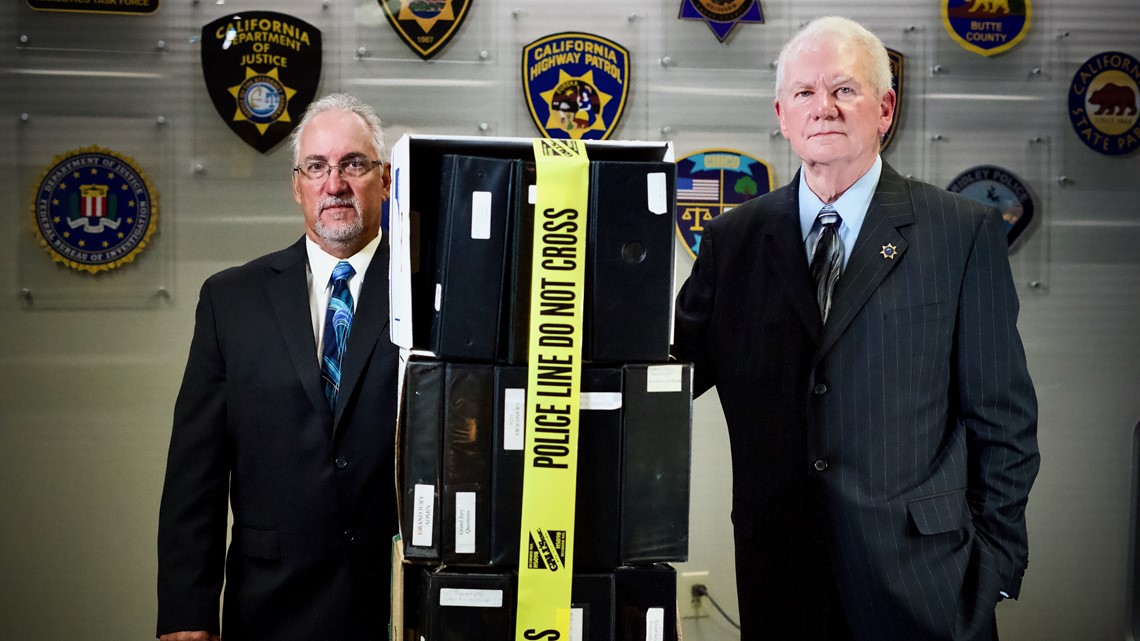
WHAT WILL IT TAKE TO SEE ACCOUNTABILITY?
There’s no better way to save customers from the cost of wildfires than stopping preventable wildfires from destroying more homes and lives.
That’s what drove Butte County prosecutors to convict PG&E of 85 felonies in the Camp Fire case, even though they knew the company wouldn’t face harsh punishment.
At sentencing, the judge pointed out that a person would be sent to prison for 90 years for PG&E’s crimes. But corporations can’t go to prison. PG&E was sentenced to the maximum fine of $3.5 million. The company earned that much revenue back within two hours of accepting its sentence.

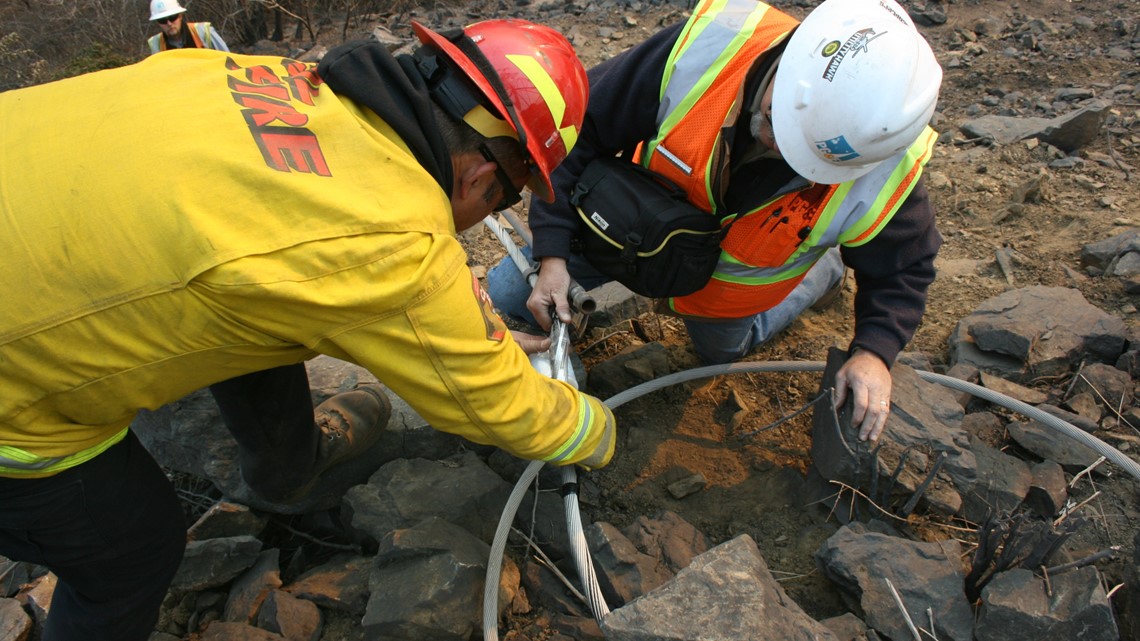
Prosecutors said they still pursued the case because it was important to call the deaths of innocent people in and around Paradise what they were: criminal killings.
“You are a killer corporation,” district attorney Mike Ramsey said. “Do you understand that?”
Aguirre urges prosecutors not to give up on the fires blamed on PG&E since then. He argues the most important part of any deal is whether the company pleads guilty to any more crimes.
“It might actually wake up our state attorney general, and wake up our governor, and wake up our legislature to take action against this recidivist criminal,” Aguirre said.
Failing that, if and when PG&E causes more wildfires, he says there’s another step prosecutors are going to have to take if they want to actually affect change and stop preventable disasters:
“It's time for us to start prosecuting individuals at PG&E.”
-
GO DEEPER: This story is part of ABC10's FIRE - POWER - MONEY reporting project. If you have a tip that could reveal more about California's crisis with utilities and wildfires, please contact investigative reporter Brandon Rittiman at brittiman@abc10.com.

